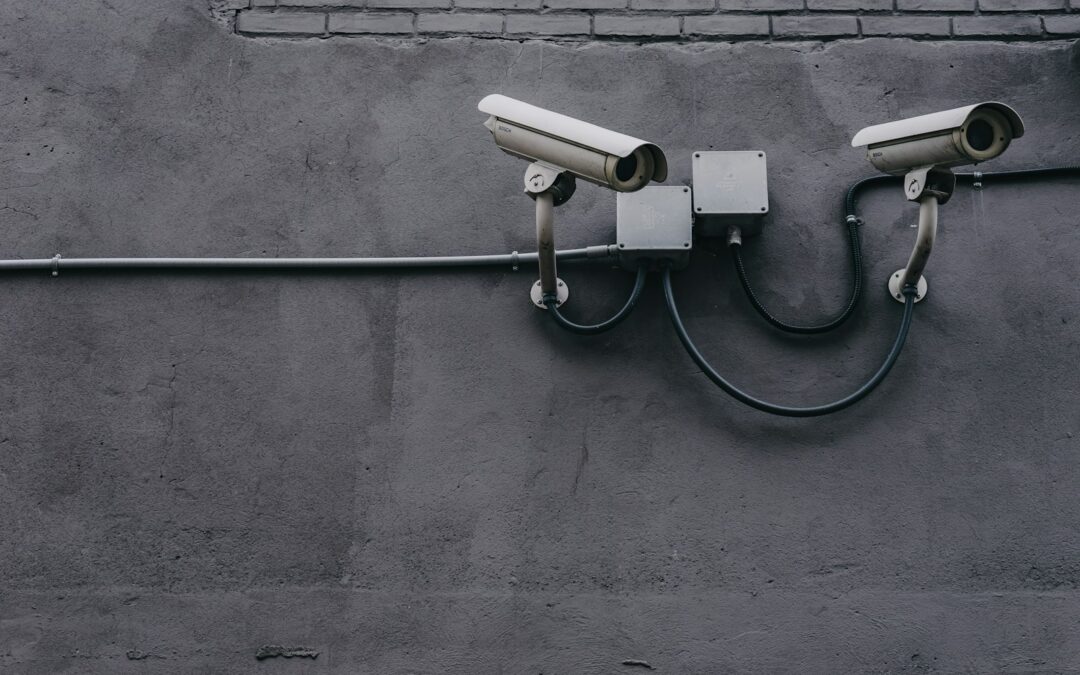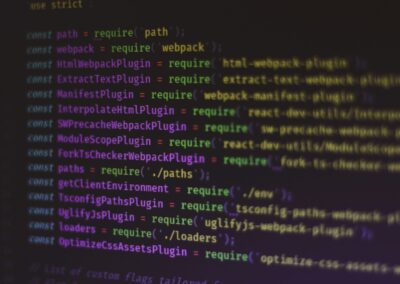Understanding the Importance of IoT Firmware Security Compliance
The Growing Need for Robust IoT Security
In today’s rapidly evolving technological landscape, the significance of ensuring IoT firmware security compliance cannot be overstated. With the proliferation of IoT devices across various sectors, including smart cities in Riyadh and Dubai, maintaining robust security protocols is paramount. Organizations must adhere to industry standards and regulations to protect their networks from potential threats and vulnerabilities.
IoT devices, by their very nature, are often interconnected and communicate with various systems and networks. This interconnectedness increases the potential attack surface, making IoT networks attractive targets for cybercriminals. Ensuring compliance with security standards helps mitigate these risks by establishing a baseline of security measures that all devices must meet. For example, in the UAE, where the adoption of IoT technology is rapidly expanding, compliance with standards such as the General Data Protection Regulation (GDPR) and the National Institute of Standards and Technology (NIST) guidelines is crucial for maintaining data integrity and privacy.
Furthermore, compliance with industry standards fosters trust among stakeholders, including customers, partners, and regulators. In Saudi Arabia, where technological advancements are integral to the Vision 2030 initiative, demonstrating a commitment to IoT security through compliance with recognized standards can enhance the reputation and credibility of organizations. This trust is essential for the continued growth and adoption of IoT technologies in the region.
Regulatory Landscape for IoT Security
The regulatory landscape for IoT security is complex and varies across different regions and industries. Organizations must navigate this landscape to ensure their IoT devices and networks are compliant with relevant standards and regulations. In the Middle East, countries like Saudi Arabia and the UAE have implemented stringent regulations to safeguard data and ensure the security of IoT deployments.
In Saudi Arabia, the Saudi Data and Artificial Intelligence Authority (SDAIA) has introduced comprehensive guidelines for data protection and security. These guidelines emphasize the importance of securing IoT firmware to prevent unauthorized access and data breaches. Similarly, the UAE has established the Dubai Data Law, which mandates robust data protection measures for all organizations operating within the emirate. Compliance with these regulations is not only a legal requirement but also a critical component of maintaining the security and integrity of IoT networks.
Internationally, standards such as ISO/IEC 27001 and the NIST Cybersecurity Framework provide a structured approach to managing and mitigating cybersecurity risks. These standards offer a set of best practices and guidelines that organizations can implement to enhance their IoT security posture. By adhering to these standards, organizations can ensure their IoT firmware is secure and compliant with global best practices.
Challenges in Achieving Compliance
Achieving compliance with industry standards and regulations for IoT firmware security can be challenging for organizations. One of the primary challenges is the sheer diversity of IoT devices and their varying capabilities. Ensuring that all devices, from simple sensors to complex industrial controllers, meet the same security standards requires a comprehensive and flexible approach.
Another challenge is the dynamic nature of the threat landscape. Cyber threats are constantly evolving, and IoT firmware must be regularly updated to address new vulnerabilities and exploits. This requires organizations to implement robust update mechanisms and ensure that all devices can receive and install firmware updates in a timely manner. In Dubai’s smart city projects, for example, maintaining the security of thousands of interconnected devices requires a coordinated effort and continuous monitoring.
Additionally, achieving compliance often involves significant investment in resources and expertise. Organizations must allocate sufficient budget and personnel to implement and maintain security measures, conduct regular audits, and ensure ongoing compliance with industry standards. In Saudi Arabia, where the government is heavily investing in technological innovation, organizations can leverage public-private partnerships and government support to enhance their IoT security capabilities.
Strategies for Ensuring IoT Firmware Security Compliance
Implementing Robust Security Frameworks
To ensure IoT firmware security compliance, organizations must implement robust security frameworks that encompass all aspects of their IoT deployments. These frameworks should include policies, procedures, and technologies designed to protect IoT devices and the data they generate. In Riyadh, where smart city initiatives are transforming urban infrastructure, adopting comprehensive security frameworks is essential for safeguarding critical systems and services.
A key component of a robust security framework is the implementation of secure boot processes. Secure boot ensures that only trusted firmware and software can run on IoT devices, preventing unauthorized code from executing. This is particularly important for preventing malware infections and unauthorized access. Additionally, organizations should implement encryption protocols to protect data in transit and at rest, ensuring that sensitive information remains confidential and secure.
Another important aspect of a security framework is the use of multi-factor authentication (MFA) for accessing IoT devices and management interfaces. MFA adds an extra layer of security by requiring users to provide multiple forms of verification before gaining access. This helps prevent unauthorized access and enhances the overall security posture of the IoT network.
Regular Audits and Continuous Monitoring
Regular audits and continuous monitoring are critical for ensuring ongoing compliance with IoT firmware security standards. Audits help identify gaps and vulnerabilities in the security framework, allowing organizations to address them proactively. In the UAE, where regulatory bodies conduct regular inspections to ensure compliance with data protection laws, organizations must be prepared to demonstrate their adherence to security standards through comprehensive audit reports.
Continuous monitoring involves real-time tracking of device performance, security events, and network traffic. By monitoring IoT networks continuously, organizations can detect and respond to security incidents promptly, minimizing the impact of potential breaches. For example, in Dubai’s smart transportation systems, continuous monitoring enables real-time detection of anomalies and ensures the security and reliability of critical infrastructure.
Automated tools and technologies can enhance the effectiveness of audits and monitoring efforts. For instance, security information and event management (SIEM) systems can aggregate and analyze data from multiple sources, providing comprehensive insights into the security posture of IoT networks. By leveraging these tools, organizations can ensure they remain compliant with industry standards and regulations while effectively managing security risks.
Leveraging Executive Coaching and Training Programs
Ensuring IoT firmware security compliance requires strong leadership and a culture of continuous improvement. Executive coaching and training programs can play a vital role in enhancing the leadership skills and knowledge of business executives and mid-level managers. In Saudi Arabia and the UAE, where technology adoption is a key driver of economic growth, investing in executive coaching can help organizations build resilient and secure IoT networks.
Executive coaching programs can provide leaders with the skills and insights needed to navigate the complexities of IoT security and compliance. By understanding the regulatory landscape, best practices, and emerging threats, executives can make informed decisions that enhance the security and compliance of their IoT deployments. In Riyadh’s smart city projects, for example, strong leadership is essential for driving the adoption of secure IoT technologies and ensuring regulatory compliance.
Training programs for IT and security personnel are also crucial for maintaining IoT firmware security. These programs should cover the latest security standards, threat detection techniques, and incident response strategies. By keeping their teams up-to-date with the latest developments in IoT security, organizations can ensure they have the expertise needed to manage and protect their IoT networks effectively.
Conclusion
In conclusion, ensuring IoT firmware security compliance with industry standards and regulations is essential for protecting IoT networks from cyber threats and maintaining the trust of stakeholders. By implementing robust security frameworks, conducting regular audits and continuous monitoring, and investing in executive coaching and training programs, organizations in Saudi Arabia, the UAE, and beyond can enhance the security and compliance of their IoT deployments. As IoT technology continues to evolve, these strategies will be crucial for supporting the rapid and secure growth of IoT networks in an increasingly connected world.
—
#IoTFirmwareSecurity #Compliance #IoTSecurityStandards #SaudiArabia #UAE #Riyadh #Dubai #ArtificialIntelligence #Blockchain #TheMetaverse #ExecutiveCoaching #GenerativeAI #ModernTechnology #BusinessSuccess #LeadershipSkills #ProjectManagement






























